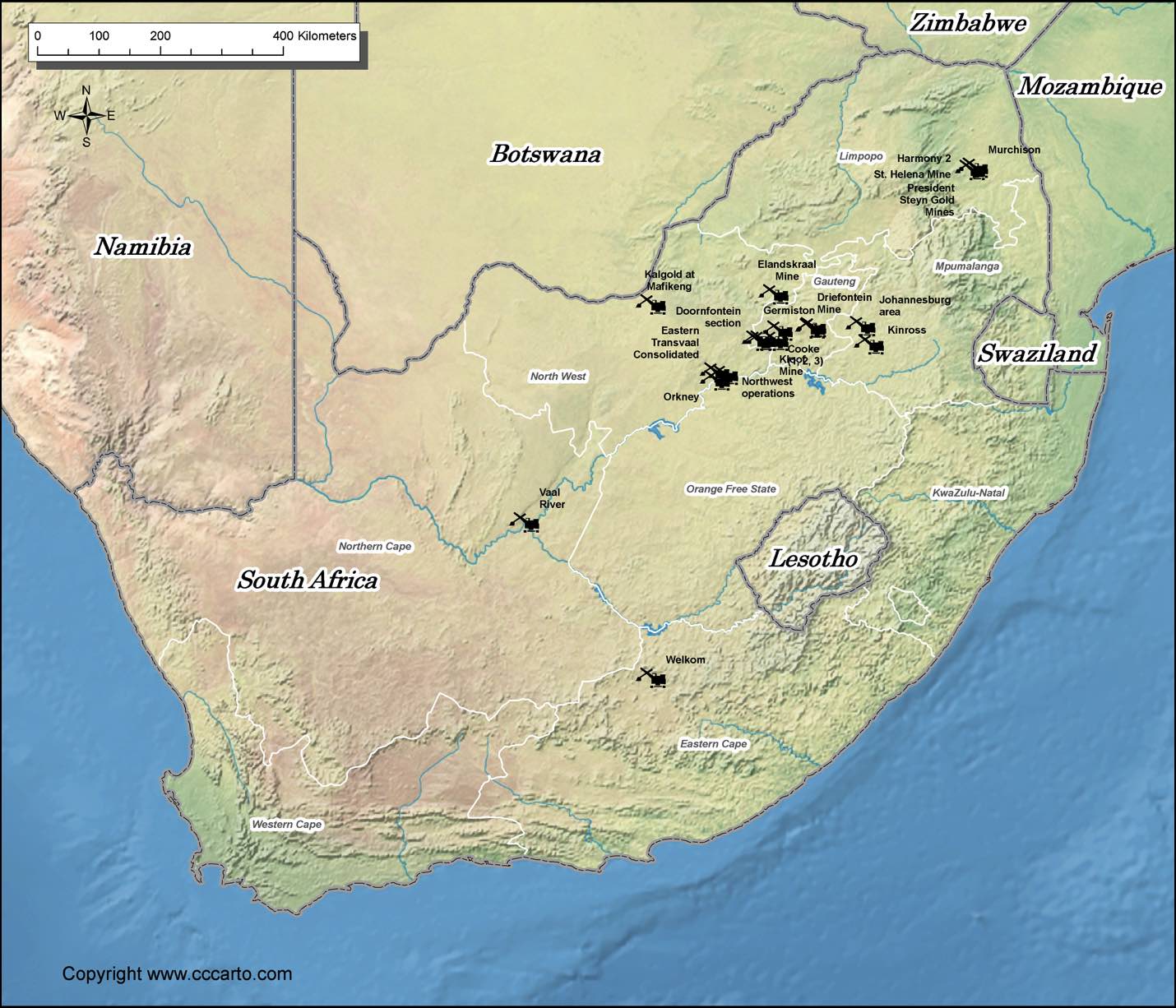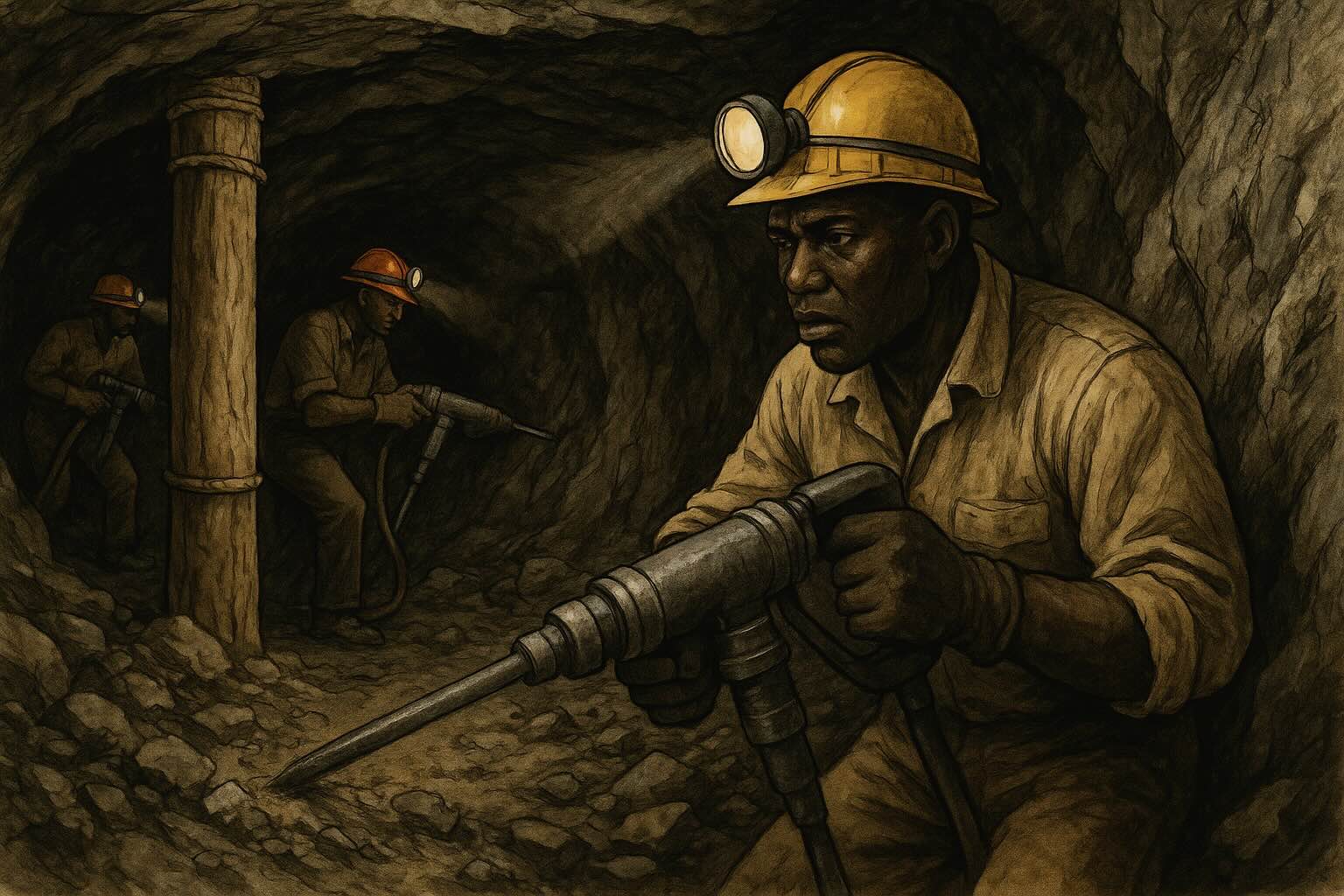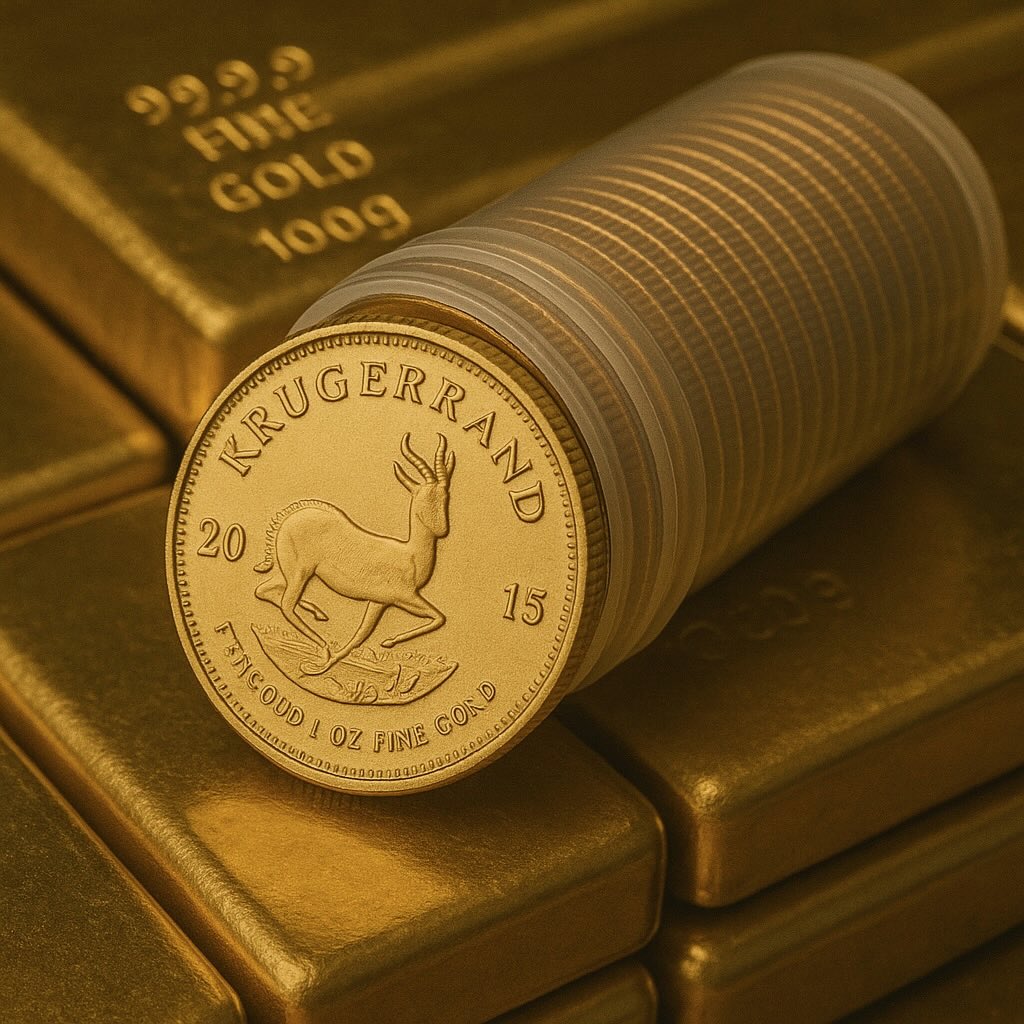
South Africa Goldmines
History of South Africa Gold Mines and Gold Mining
1. Early Beginnings and Discovery:Gold mining in South Africa dates back to the late 19th century, with significant discoveries around 1886 in the Witwatersrand Basin. This discovery led to the establishment of Johannesburg, known as the City of Gold.
2. Early Pioneers: The first men to start gold mining in South Africa were primarily prospectors and miners from various backgrounds, including local African communities, European settlers, and adventurers seeking fortune.
3. Control and Corporations:
Early gold mining in South Africa saw a mix of independent prospectors and companies controlling the industry. Over time, large corporations like Anglo American and Gold Fields emerged as dominant players, consolidating control over major mines.
4. Most Productive Areas:
The Witwatersrand Basin, centered around Johannesburg, has been the most productive area, hosting some of the world's largest gold deposits.
5. Major Mines and Types of Gold:
• Types of Gold: The gold found in South Africa's mines includes both placer gold and gold found in veins, often in deep rock formations.
• Major Mines: Notable mines include Mponeng, TauTona, Driefontein, and Kloof, among others. Each mine varies in its type of extraction method and depth.
6. Successful Mining Techniques:
In South Africa, deep-level mining techniques, such as deep shafts and underground mining, have been the most successful due to the depth of the gold deposits in the Witwatersrand Basin.

7. Famous Gold Strikes and Veins:
The Witwatersrand Basin itself is legendary for its rich gold strikes and veins, producing some of the world's largest and most significant gold deposits.
8. Cities Built Around Gold Mining:
Johannesburg is the most prominent example, growing rapidly due to the gold rush and becoming a major urban center.
9. Gold Sales and Markets:
Gold mined in South Africa is typically sold through various channels, including international markets and local refineries. It ends up in global markets where it's used for jewelry, investment, and industrial purposes.
10. Living Conditions and Environmental Impact:
• Living Conditions: While conditions have improved, challenges remain in ensuring fair wages and safe working conditions for miners.
• Environmental Costs: Gold mining in South Africa has had significant environmental impacts, including water pollution, deforestation, and land degradation.
11. Gold Coins:
The most famous gold coin minted in South Africa is the Krugerrand, introduced in 1967. It remains a popular choice among investors worldwide.

12. Closed and Active Mines:
Several mines in South Africa have closed over the years due to economic factors or depletion of reserves. Active mines continue to operate, focusing on deeper and more complex deposits.
Conclusion
Gold mining in South Africa has shaped the nation's history and economy profoundly, from the early gold rushes to modern-day challenges and innovations in mining technology and sustainability. The industry continues to play a crucial role in South Africa's economy and global gold markets.Source: U.S. Geological Survey, Major mineral deposits of the world, Open-File Report 2005-1294. Data portal